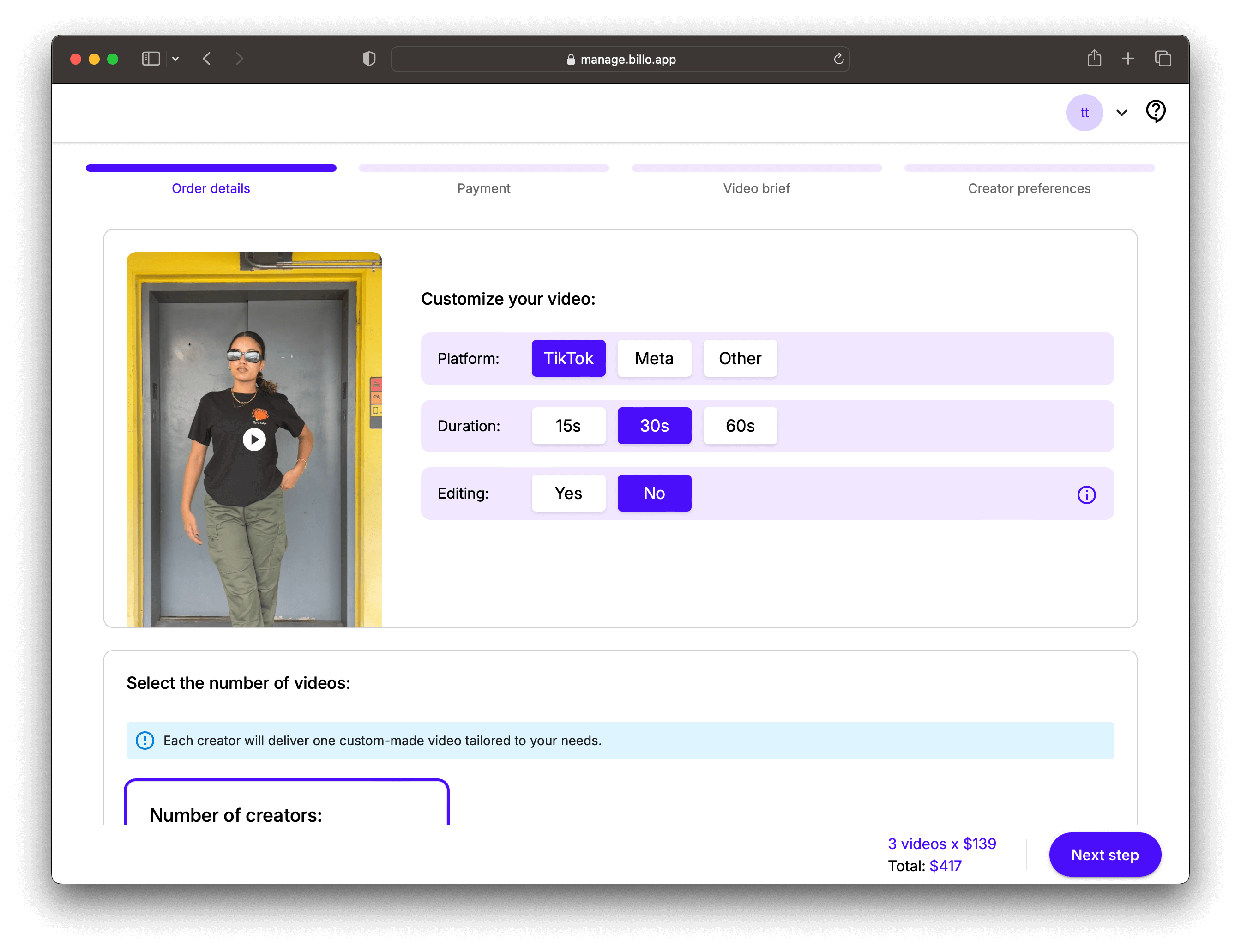What Is UGC (User-Generated Content)? Beginner's Guide


Introduction
User-Generated Content (UGC) is reshaping the way brands connect with their audiences. Unlike traditional advertising or influencer campaigns, UGC is content created by real users — not the brand itself. From social media posts to reviews and video testimonials, UGC offers an authentic, relatable touch that traditional content often lacks.
In this article, we’ll dive into what UGC is, why it’s so impactful in modern-day business.
Why UGC Matters in Marketing
First, it is very effective because it brings a sense of trust and authenticity that branded content often cannot achieve. Here’s why UGC is crucial for modern marketing strategies:
- Authenticity: Consumers trust content created by their peers more than traditional advertising.
- Engagement: UGC is often more relatable, leading to higher engagement rates.
- Cost-Effectiveness: Instead of producing high-budget content, brands can leverage existing content from users.
- Community Building: Encouraging UGC fosters a sense of community and loyalty among customers.
UGC vs. Traditional Influencer Content
While influencer marketing often focuses on high-profile collaborations, UGC comes from everyday users. Here's how they differ:
Creator Background
Traditional influencer content is produced by professional content creators with established followings, while UGC comes from regular customers sharing their genuine experiences with products or services.
Production Quality
Influencer content typically features high-end production value, professional editing, and carefully planned shots. In contrast, UGC is often raw, unpolished, and spontaneous, which actually adds to its authenticity and relatability.
Cost Structure
Influencer marketing requires significant investment, with creators charging per post based on their following size. UGC is generally cost-effective, as content is voluntarily created by users, often incentivized through contests or simple recognition.
Trust and Authenticity
While influencers can reach large audiences, their paid promotions sometimes face skepticism from viewers. UGC tends to generate higher trust levels because it comes from real users without direct financial motivation.
Brand Control
With influencer partnerships, brands maintain significant creative control over messaging and presentation. UGC offers less control but provides more authentic, diverse perspectives that audiences often find more credible.
Platforms like Keyla stand out by offering AI-driven UGC video generation. This approach combines authenticity with scalability, enabling brands to generate UGC-style content without relying solely on organic submissions.

Examples of UGC in Action
Here are some ways brands leverage UGC effectively:
- Social Media Posts: Customers sharing photos of products they love.
- Video Testimonials: Real users talking about their experiences.
- Hashtag Campaigns: Encouraging users to participate in branded challenges.
- Review Highlights: Showcasing customer feedback on websites or ads.
By using UGC, brands can create a more personal connection with their audience while building social proof.
Traditional UGC Creation Process
Traditionally, brands have two main approaches to sourcing UGC content. Instead of relying on actual customers to purchase and review products organically, companies are increasingly seeking out content creators to produce UGC-style videos.
Freelance Content Creator Platforms
Brands can hire freelance content creators through platforms like Fiverr, where prices and quality can vary significantly. These platforms offer a wide range of creators with different skill levels and price points, making it accessible for businesses of all sizes.

Dedicated UGC Platforms
Specialized UGC platforms like Billo focus exclusively on connecting brands with verified content creators. These creators are sent products to test and review, creating content that mimics authentic customer experiences. These platforms typically charge per video (starting around $99) and offer a more structured approach with quality guarantees and specific turnaround times.
While these methods have proven effective, they still require significant coordination, management of creators, and manual oversight of the content creation process.

How Keyla Enhances UGC Creation
Unlike traditional UGC campaigns that depend entirely on user submissions or hired creators, Keyla allows brands to generate UGC-style videos using cutting-edge AI technology. This method ensures consistency and quality while still maintaining an authentic feel. By leveraging the latest developments in artificial intelligence, including advanced text-to-speech from ElevenLabs and state-of-the-art video generation models, Keyla creates incredibly realistic UGC-style content.
By 2026, Keyla aims to completely replace manual UGC creation, streamlining the process for marketers and content creators. This revolutionary approach will eliminate the need for coordinating with multiple creators, waiting for deliverables, or managing revisions. The platform stays current with the latest AI improvements, regularly integrating new capabilities as they become available.
Key features include:
- Advanced AI-Powered Videos: Generate content that mimics user submissions using the latest video generation models, complete with natural gestures and expressions.
- Realistic Voice Generation: Utilize ElevenLabs' advanced text-to-speech technology to create authentic-sounding voiceovers in multiple languages and accents.
- Speed and Scalability: Create large volumes of UGC-style content quickly, with the ability to generate hundreds of variations in minutes.
- Customizable Storylines: Tailor content to align with brand messaging while retaining a relatable tone, with AI understanding context and brand voice.
- Multi-Modal Generation: Combine various AI technologies to create cohesive content, from script writing to video rendering and voice synthesis.
This innovative approach bridges the gap between organic UGC and professionally produced content, offering brands the best of both worlds: the authenticity of user-generated content with the reliability and scalability of AI-powered solutions.
Conclusion
UGC is a powerful tool for building trust, engaging audiences, and fostering loyalty. By blending authentic user content with scalable solutions like Keyla, brands can unlock the full potential of UGC in their marketing strategies. Whether you rely on customer contributions or enhance your campaigns with AI, UGC is here to stay as a cornerstone of modern content marketing.